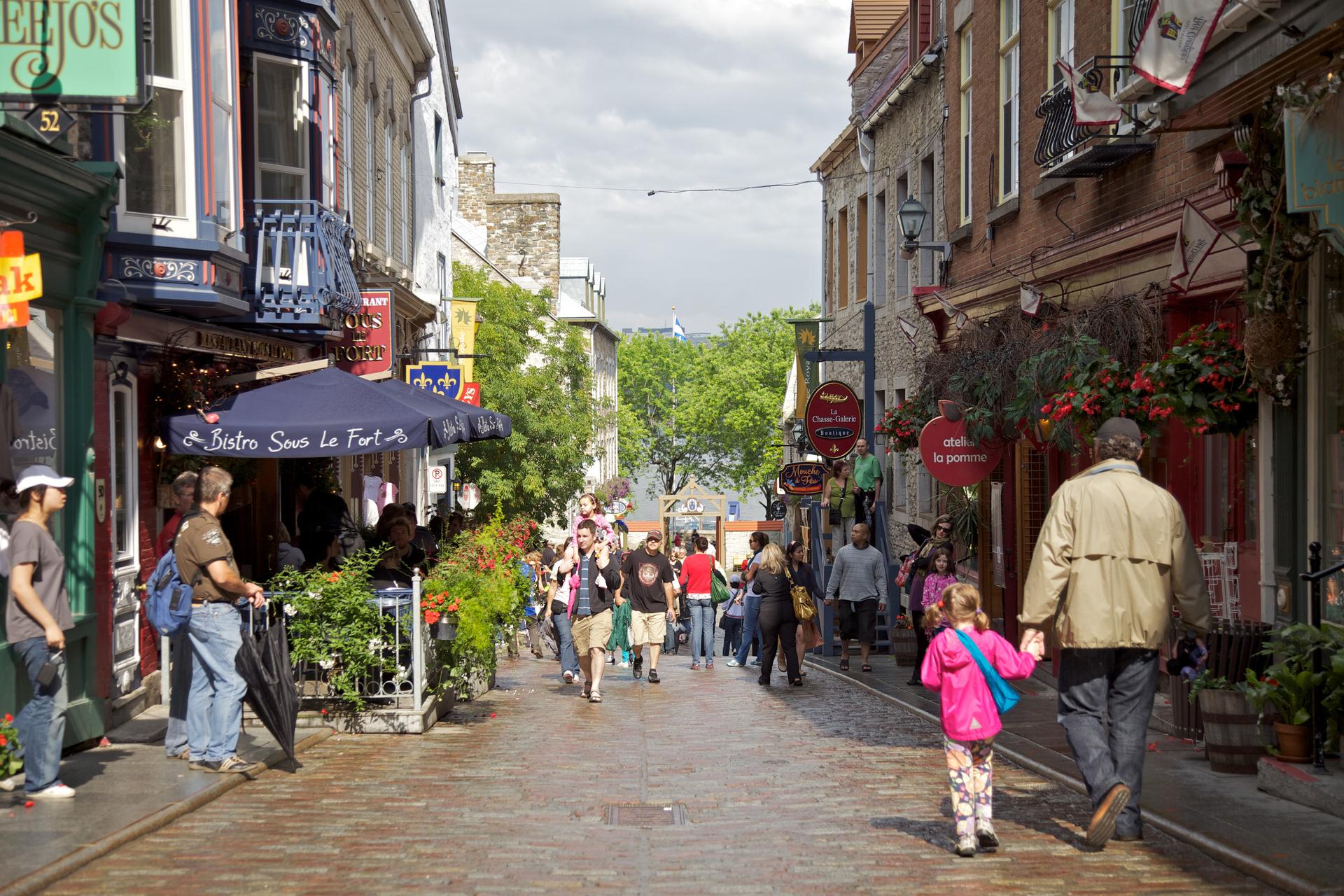Four hundred years of history and culture fill the walls of Old Quebec (Vieux-Québec). This UNESCO world heritage treasure is the cradle of French civilization in North America, a little taste of Europe with all the architecture, cuisine, and charm that comes with it. In just a few hours you can visit the site of world-changing battles, enjoy an authentic Canadian meal overlooking cobblestone streets or the St. Lawrence River, and browse the works of generations of local artists.
Old Quebec isn't just walkable; it's best explored on foot. Every corner, stairwell, doorway, and alley hides some unique feature or attraction that you just wouldn't see in a car. We've gathered all the main attractions you need to visit on a tour by foot of the old city. Lace up those walking shoes!
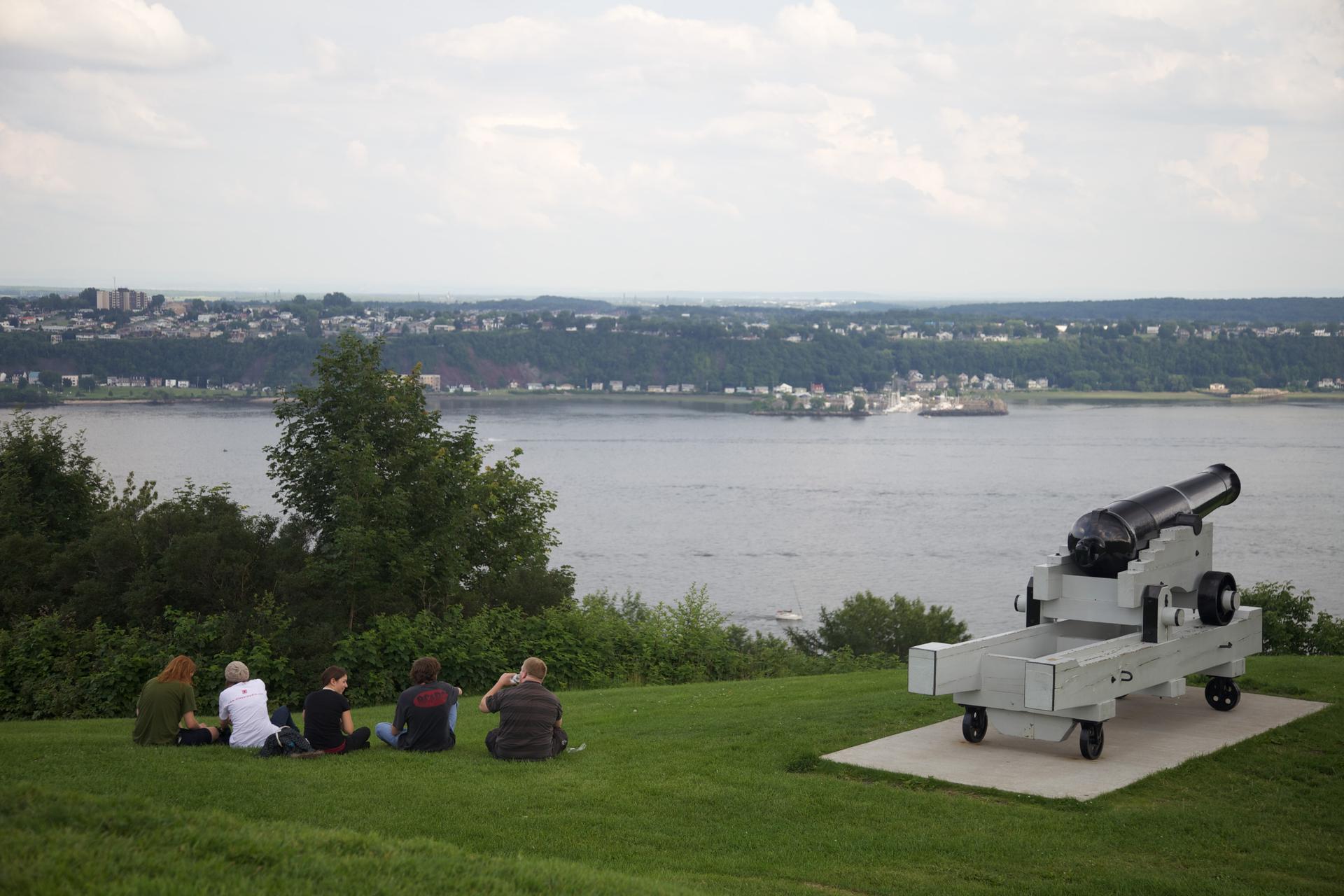
Starting things off at the battlegrounds
Just outside the walls of the old city, Quebec's Parliament Building is a great place to start your tour. Finished in 1886, the building is Quebec's oldest historic site, and has housed political debate for over a century. Inspired by the Louvre Palace in Paris, the building is a beautiful piece of architecture, especially at night when it is lit up. The Parliament grounds are adorned with 26 bronze statues to memorialise key figures in the history of the province, and the beautiful Fontaine de Tourney sits in front of the main building like an extravagant centerpiece.
From Parliament, you can easily stroll over to the Plains of Abraham. It was here, in 1759, that French and British troops faced off for control of the city. Today, the Plains are like Quebec's own Central Park. Every day, this incredible urban green space is filled with people cycling, picnicking, cross-country skiing or snowshoeing. The Plains of Abraham also act as the setting for Le Festival d'été du Québec, a huge music festival every summer that has attracted the likes of The Rolling Stones, The Foo Fighters, and Lady Gaga, to name a few.
Before leaving the Plains, stop at the Musée National des Beaux-Arts, the city's fine arts museum, which has a collection of 38,000 works from the last four centuries. The museum takes particular care to highlight Quebec's artists and their work.
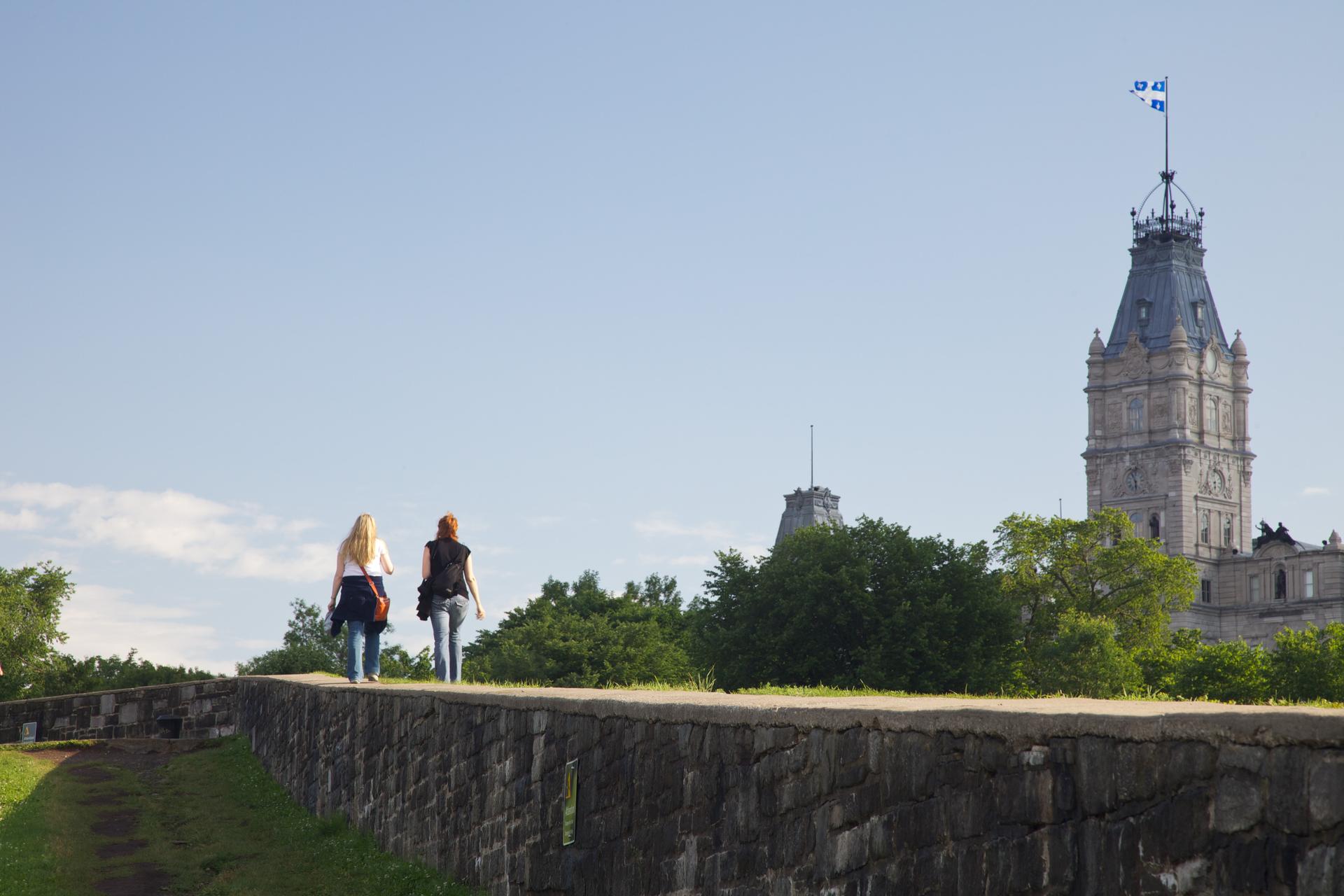
If these walls could talk
After circling back from the Plains and heading east, enter the walls of the old city through Porte Saint-Louis, an impressive stone gate first built in 1694. From there, it's hard to miss the next stop on your walking tour: the Citadelle of Quebec.
A history buff's dream, this fortress was built following the War of 1812. Centuries of history are preserved inside these walls. Though it once hosted British troops, the fort is now home to the Royal 22e Régiment, the only solely French-language infantry regiment in the Canadian Forces. Get a guided tour of the star-shaped Citadelle and enjoy the Changing of the Guard ceremony. Complete the experience with a visit to the new regimental museum. They might even let you try on some night-vision goggles.
Connected to the Citadelle, and wrapping around nearly the entire area, are the fortifications of Quebec. At around 4.5 kilometres in length, the fortifications around Old Quebec make it the only walled city north of Mexico. Part of a defence system built between 1608 (when Samuel de Champlain founded Quebec) and 1871, by French, then British and eventually Canadian forces, you can walk these walls on your own or take a tour to learn their history. Plus, you'll enjoy the views on either side: the historic city within, and the St. Lawrence River beyond
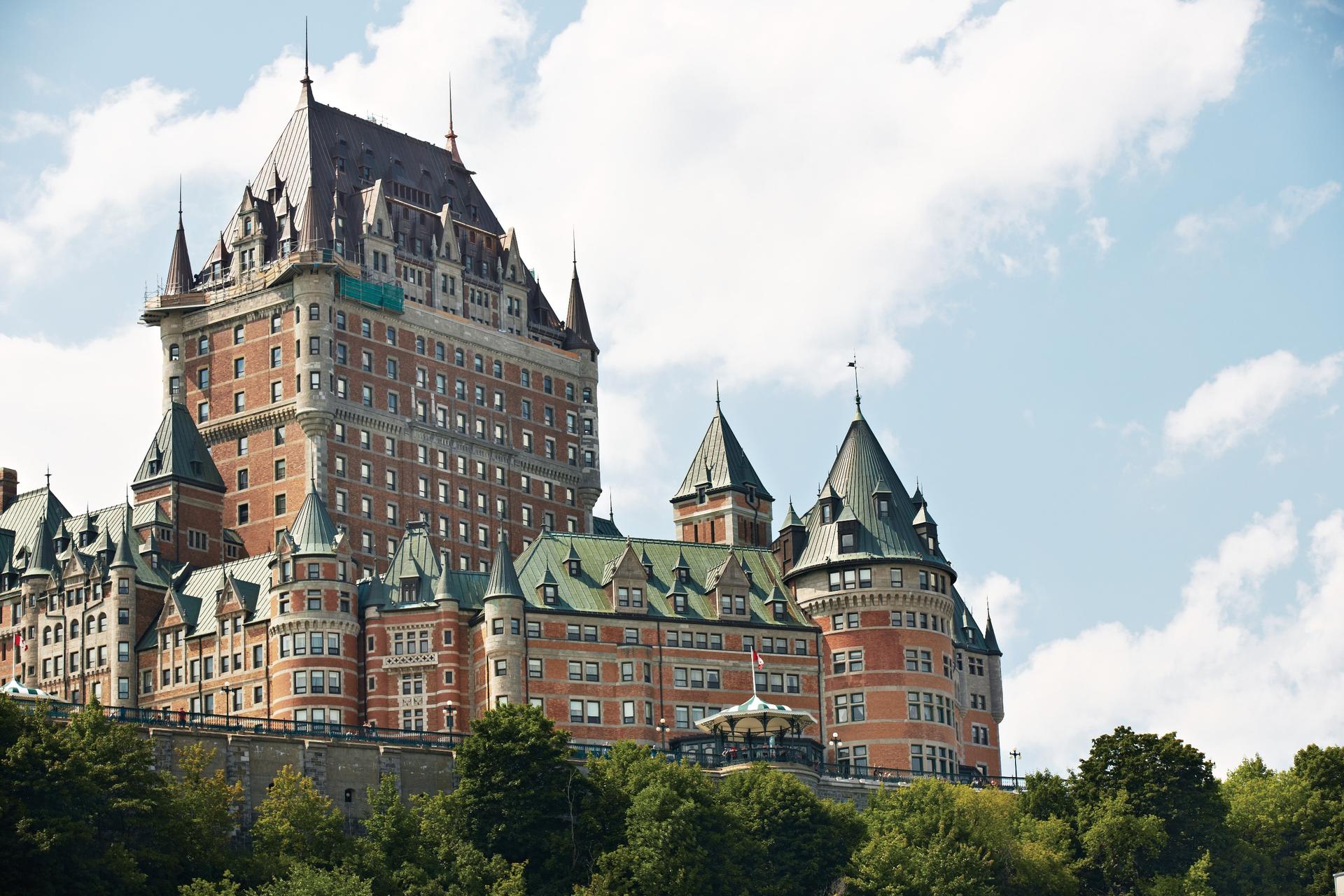
Enter the fairytale
Walking the walls of a fortress, you might feel as though you're in a fairytale. The Château Frontenac, only a few blocks northeast of the Citadelle, is only going to reinforce that feeling. The Château can only be described as a castle. Work on the building began in 1892, but it embodies the architectural styles of earlier periods, including the Middle Ages and the Renaissance. With over 600 rooms filling 18 floors and a number of turrets, all topped by a distinctive green roof, it's of little wonder why the Château is the most photographed hotel in the world.
The hotel sits on the Dufferin Terrace (Terrasse Dufferin), which is an attraction in its own right. Built in 1838, the Terrace's wooden boardwalk offers incredible views of the St. Lawrence River and the Island of Orleans (Île d'Orléans). In the summer, enjoy the musicians and street artists that fill the space or take in the boats floating by. In the winter, take a closer look at the many cannons that defended Quebec City through its history, or re-live your childhood and fly downhill at 65 kph on the toboggan run.
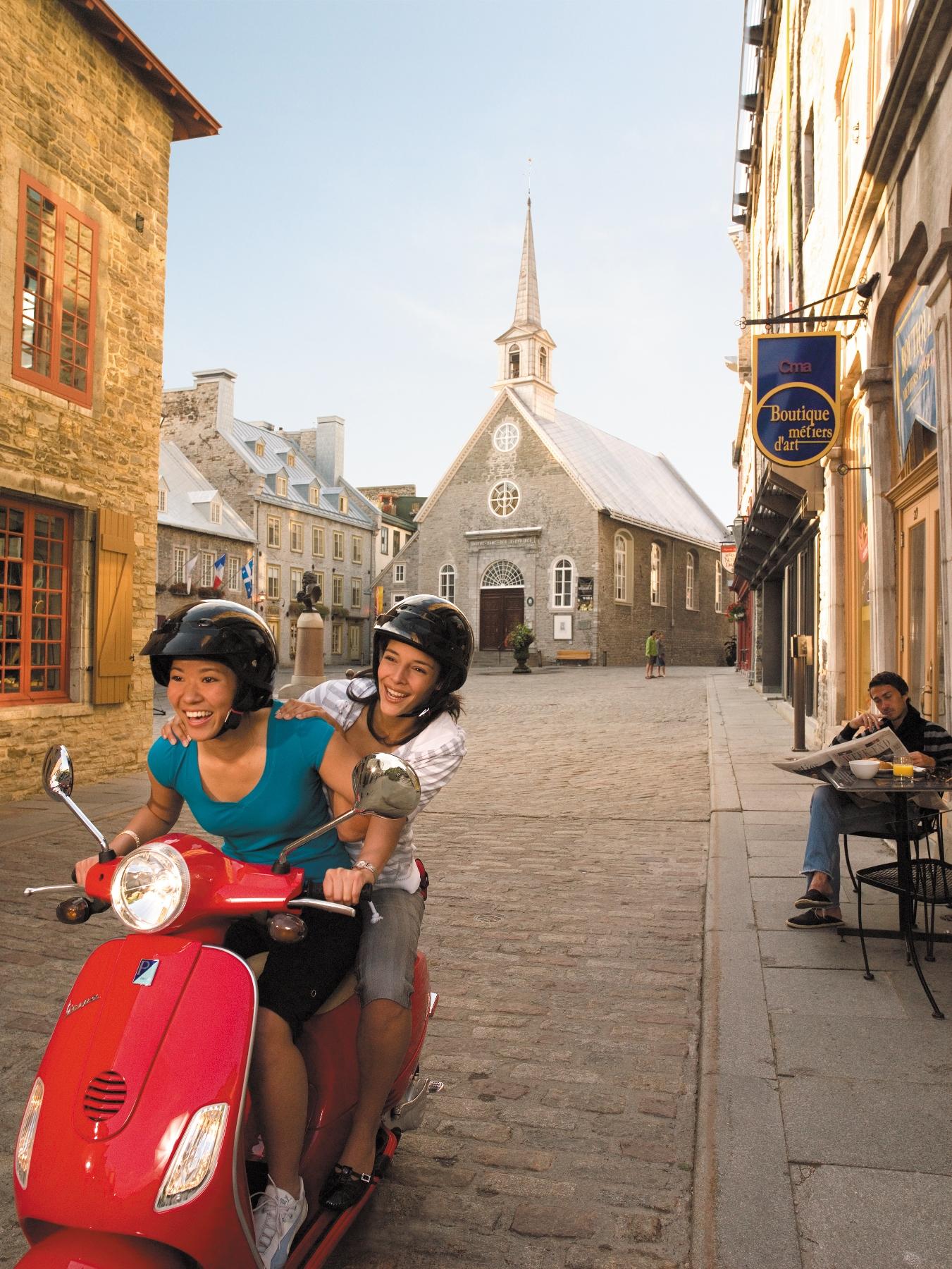
Cobblestone streets and good eats
From the Dufferin Terrace, hop onto the funicular (an old-fashioned vertical railway) and head down into the Petit Champlain district (Quartier du Petit Champlain)-one of the oldest neighbourhoods in North America. Walk the narrow, cobblestone streets, lined with old stone homes, and pop into the many boutiques and shops for a fashionable souvenir. Let your nose guide you to one of the many restaurants and bistros, and be sure to make time to indulge your sweet tooth with local maple syrup treats at the La Petite Cabane à Sucre.
Just a short walk away is Place Royale, a small square with a big history. It was here that Samuel de Champlain founded the city in 1608. Today Place Royale takes visitors back in time with the help of the oldest stone church in North America, and a massive mural that traces 400 years of Quebec history.
Head east into the Old Port (Vieux Port) for the best views of the St. Lawrence River. In the winter, listen to the ice crack as it flows down the river, or take a night-time walk in the summer to enjoy the aurora borealis light display projected onto the port's grain silos. A hub for foodies, you can grab some fresh local produce, cheese or other foods at the Québec Public Market, or opt for a meal at one of many fine-dining restaurants in the area.
End your walking tour by circling back to the western part of the old city, via rue Saint-Jean. The road is at the center of a popular district for cultural events, specifically in the summer when the street is closed to traffic and pedestrians take over. Stroll down the street, from boutique to boutique, go for an ice skate at Place d'Youville in the winter time, and stop at the Notre-Dame de Québec Basilica-Cathedral. This UNESCO World Heritage Site is an incredible piece of architecture, housing beautiful art and lots of history.
Charmed by Old Quebec? Start planning your trip with the help of the Quebec City Tourism website.
Charmed by Old Quebec? Start planning your trip with the help of the Quebec City Tourism website.
